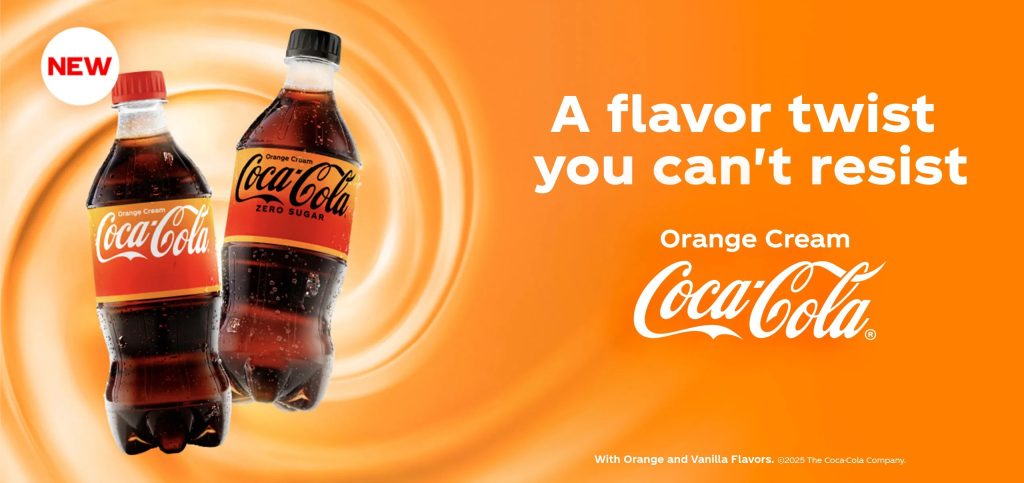Conrad Persons explores how nostalgia, grounded in purpose, can be one of the most powerful tools in a brand’s creative arsenal
Nostalgia is having a moment. Again.
From ‘90s sitcom merch on primary schoolers to TikTok teens obsessing over grainy movie clips, the past is cropping up everywhere – bite-sized, highly shareable, and just a swipe away.
In an era of political, economic, and technological upheaval, it makes sense that people are reaching for something familiar and comforting. Something less complicated than the now.
For FMCG brands, that emotional pull presents a clear opportunity. Unlike sectors built on constant reinvention – à la technology – FMCG has a natural alignment with nostalgia. These are brands that show up in life’s most emotionally resonant moments: childhood treats, family dinners, late-night snacks with friends. They’re part of our rituals and relationships. That creates a kind of emotional credibility you can’t manufacture.
Heritage players have already clocked this. Coca-Cola, Cadbury, Mountain Dew – they’ve all leaned into their archives in recent years. The Mountain is back in Mountain Dew. Cadbury’s Top Deck has reappeared in vintage-style packaging. Coca-Cola’s been playing with Orange Cream.

But nostalgia isn’t just a playground for century old brands. New, challenger, and niche brands can tap into it too – they just need to approach it a little differently.
Tapping into the past without living in it
There are a wealth of ways that brands can tap into nostalgia – but it depends both on the brand (heritage, new or somewhere in between), and the mechanism (be that mining the archives or owning moments).
The best nostalgia-led work lives in the tension between the old and the new – not copying the past but reinterpreting it for today.
For legacy brands, that might mean looking inward – mining the archives for truths that still resonate. The creative challenge is then how you bring those truths to today’s audience.
But if you don’t have that history to mine, or you want to reach beyond your core audience, there are other ways in. And arguably, more interesting ones.
Collaborations let brands borrow cultural equity from one another. New brands can ride on the heritage of established ones, while older brands gain relevance from younger, more digitally native names.
Even heritage-to-heritage pairings can unlock something unexpected when they share the right cultural glue. We explored this with Pringles x Nintendo’s Mario – two very different products, tied by one nostalgic touchstone: entertainment. The collaboration felt fresh, credible, and allowed Pringles to enter gaming culture.

Unlike typical partnerships based on category or similar brand cues, nostalgia taps into deeper connections – emotional, cultural, or simply a shared moment in time.
Rituals are another way in. Most nostalgic moments aren’t about brands – they’re about shared experiences. Movie nights. Holiday baking. Shopping trips with mum. Brands that tap into those rituals can still evoke deep emotional responses, even if they weren’t originally part of the scene.
Then there are the emotional needs underpinning nostalgia: a yearning for innocence, simplicity, community. Any brand that understands its audience can evoke the past by tapping into those emotional reservoirs.
Finally, there’s execution: the media, the experiences, the timing. Nostalgia can be signalled in subtle ways – a reference, a time of year, a celebrity link – without ever needing to over-explain itself.
The creative dos and don’ts
For all its power, nostalgia comes with creative watch-outs. Here’s what we’ve learnt about doing it well:
DO: be crystal clear on the value you’re adding. Nostalgia only works if your brand has a role to play, not just a logo to place. Are you reviving something old for a new audience? Bringing two cultural worlds together? Ask: what role are you serving?
DO: make the old feel new. Whether through platform choice, unexpected execution or inclusive messaging, nostalgia should be reimagined in ways that feel fresh and relevant to today’s audience.
DO: be inclusive. It might be a controversial word right now, but the best nostalgic campaigns open things up. They take memories that might once have been niche and invite everyone in.
DO: invest in the craft. If you’re tapping into a treasured moment, you have to execute it to an exceptionally high standard – in a way that elevates what came before, passes the sniff test for long-time fans, and feels worthy of introducing to new audiences.
DON’T: just hold up a mirror to the past. If your creative idea boils down to “remember this?”, without saying anything new or adding value, it’s unlikely to land. The past can’t do the emotional heavy lifting on its own.
DON’T: fake the feeling. If the emotional hook isn’t grounded in something real, it won’t resonate. Nostalgia works best when it reveals something people already half-remember, not when it tries to invent meaning from scratch.

DON’T: assume nostalgia only means ‘cosy’. There’s space for irreverence, irony, even darkness. A brand like Liquid Death could easily tap into nostalgia with a subversive lens – it doesn’t have to be all Christmas ads and golden-hour cinematography.
The role of insight
All of this hinges on good insight. The most effective nostalgia-led campaigns aren’t just chasing a trend – they’re grounded in a deeper understanding of culture, brand and audience.
Cultural insight means knowing which parts of the past are being rediscovered, re-shared or re-evaluated. Social media is key here. It shows not just what people feel nostalgic for, but how that nostalgia is manifesting. Are old sitcoms being rewatched, or cut into two-minute reels? Are people reliving storylines, or just borrowing the fashion? Miss those behaviours, and you’ll miss the most important aspect of nostalgia: the why.
You also need to understand where your brand fits into that cultural landscape, and just as importantly, where it doesn’t. Some spaces are yours to own; others aren’t.
Then there’s the emotional piece. The most resonant work taps into what people are really yearning for – simplicity, connection, comfort, or something else entirely. That’s where audience insight comes in: not just who they are, but what they’re missing and want to feel more of.
So, what’s next?
Nostalgia isn’t going anywhere. However, it is evolving.
The windows are shrinking. People are nostalgic for things that happened three years ago, not just thirty. Social media has atomised the past, making it easier to revive micro-moments and build communities around them.
Nostalgia is also getting weirder. More niche. More subversive. You don’t need mass cultural resonance like Friends anymore – Doogie Howser will do. As more brands lean into this space, we’ll see a broader tonal palette emerge.
Ultimately, nostalgia is not about the past. It’s about emotional resonance. And in a world where attention is fragmented and trust is hard-won, that resonance matters more than ever.
Whether you’re a heritage player with archives to mine or a startup with no history but a strong emotional POV, this is an open invitation. The nostalgia space is wide open.
Conrad Persons is the CEO of Grey London






